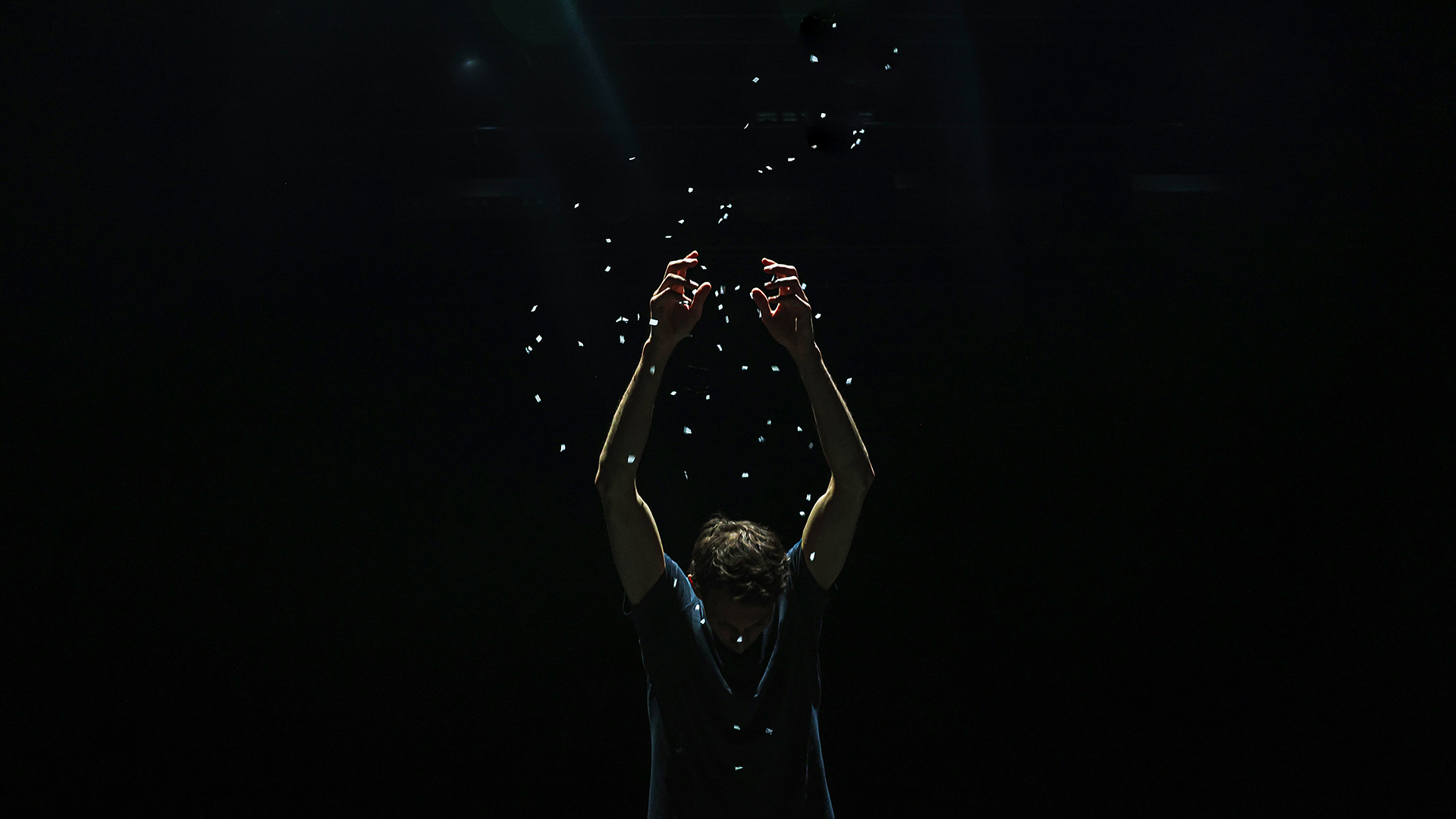The dance-movement performance piece by Emily Gualtieri and David Albert-Toth was presented at Montreal’s Agora de la danse from Nov. 2 to 5
À bout de bras involved acrobatics and contortion, magic, humorous poems and storytelling, performed uniquely by Albert-Toth, all based on the theme of Tantalus.
The Greek mythical figure was famously punished after death in the deep abyss of Tartarus, where he was forced to stand in a pool of water under a fruit tree with low hanging branches. The water would sink every time he went to drink it, and the tree branches hanging over him would elude his grasp every time he was hungry.
Albert-Toth’s original inspiration for this piece came from the concept of solitude. “We looked to use an example of a fallen hero. The Joker, Muhammad Ali, who’d experienced their own solitude amounting to their self destruction. When we discovered the story of Tantalus, we knew we found the one,” said the performer.
The mythological figure was known to have been a ruler of the Anatolian city of Tantalís. He was sentenced to his infamous punishment after having offered his son as food to the gods when invited to Mount Olympus to prepare a feast for them.
The idea had been in the works since 2019. After the arrival of COVID-19, during which the world had to confine and experience solitude, Gualtieri and Albert-Toth knew it was essential to present it as soon as possible, after the ebbs and flows of the global crisis.
The dancer started the piece almost nude, wrapped in a sparkly cloth. He argued to the crowd that instead of attending his act, we as citizens should be taking action to prevent the ongoing domination of capitalism. If we believed it was important, we wouldn’t choose to merely sit in our venue seats looking for entertainment. Only after Albert-Toth clothed himself and provided a powerful dance representing Tantalus’ struggle and torment, did he reveal the reason for his monologue on the economic system.
The following segment was an allegory involving a Coca-Cola vending machine and how desperate he was for a soda, but didn’t have any change. The soda represented relief and reward for hard work. The dancer humorously hyperbolised his desperation for it by contorting and writhing on the floor, rhythmically rapping about how he would do anything for that “kssss” in his life.
Albert-Toth alternated between expressive dances on Tantalus’ desperation and the real matters of companies capitalizing on our selfish needs. The performance ended in a heartwarming magic act, with many colours which contrasted the darkness submerging the dancer for nearly the entirety of the piece.
All in all, the show was brilliant and thought-provoking. As someone who found it difficult to understand interpretive dance and movement performance, the story, humour, and sheer athleticism opened a new world for me.
